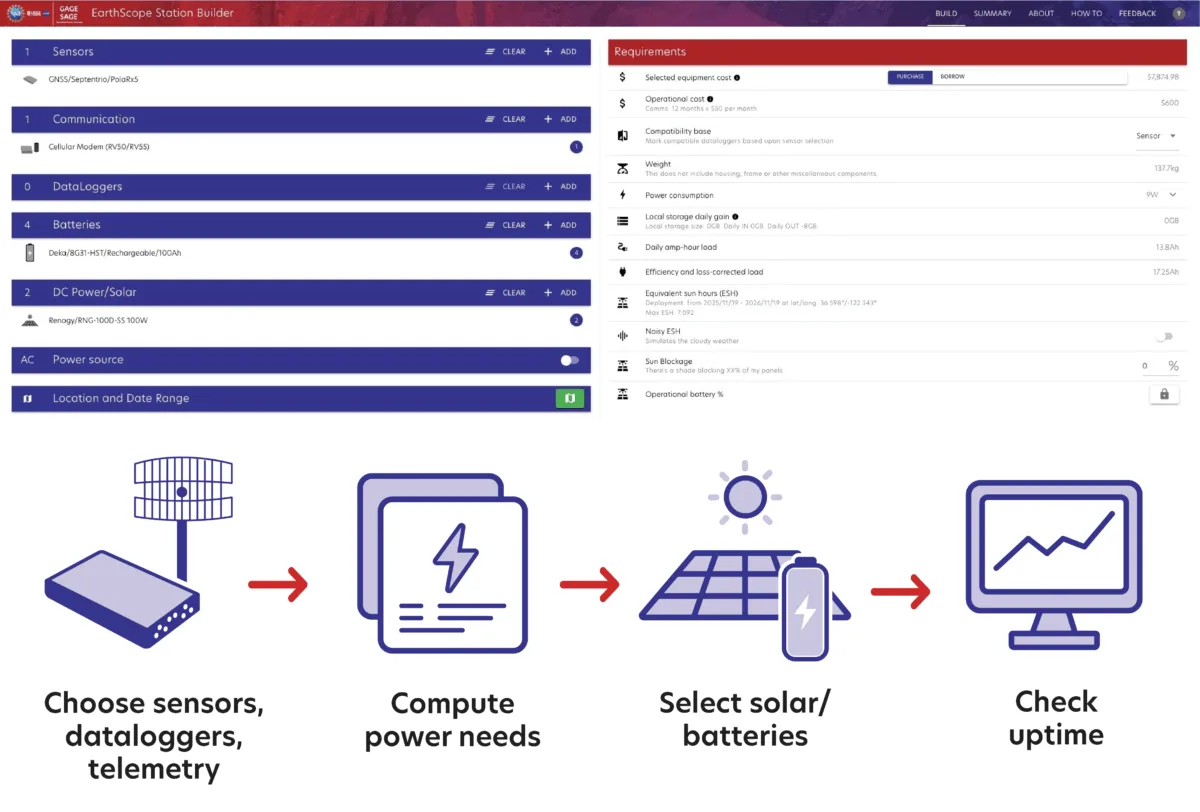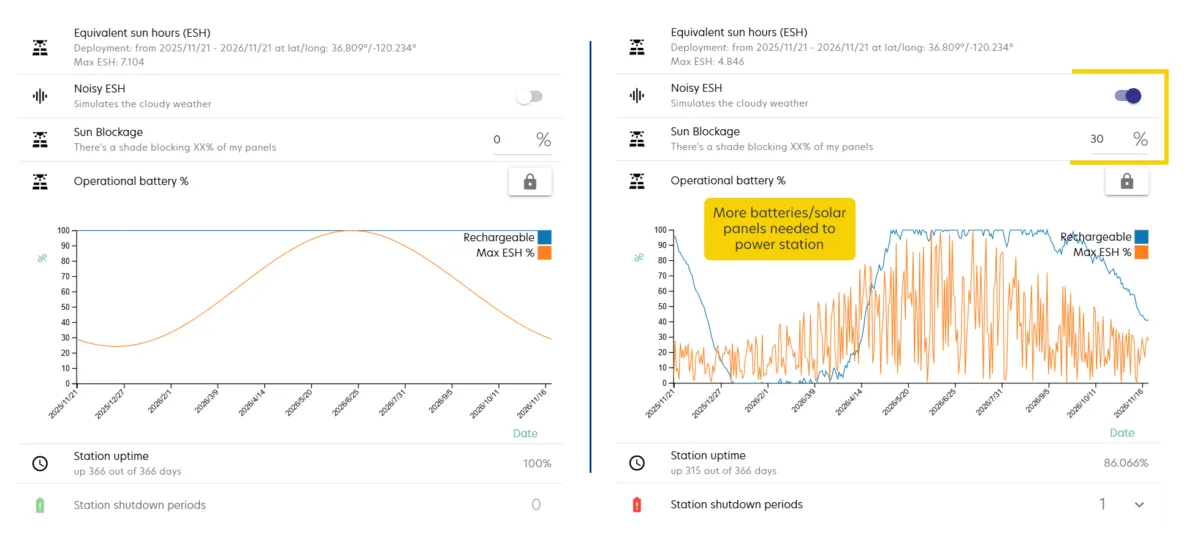EarthScope’s Common Sensor Platform (CSP) initiative continues to advance efforts to develop and implement standardized station designs for geophysical instrumentation with modular and scalable elements. As part of this work, the CSP team released a beta version of a Station Builder tool in May 2024—an interactive, web-based resource that helps users plan both permanent and temporary deployment station configurations. Over the past year, community feedback has guided the development of several new features that further improve the Station Builder tool.

The Station Builder tool allows users to explore different combinations of sensors, dataloggers, and telemetry systems and see the power demand needed for each configuration. The user can then estimate the number of solar panels and/or batteries that would be needed to power the station for its desired lifetime. These features support both research design exploration and educational use.
Key new enhancements to the Station Builder tool include the addition of a data accumulation calculator that allows the user to identify how long a datalogger is able to record data based on the sample rate and data storage size. The tool now also allows the user to account for “sun blockage” (such as shading effects from canyon walls, dense vegetation, or other environmental obstacles) when computing Equivalent Sun Hours related to site selection. Another key update is the addition of first-level compatibility tagging between sensors and dataloggers, helping users quickly identify viable equipment pairings and avoid configuration errors.

Along with the recently released requirements document and technical design document, the Station Builder Tool demonstrates the CSP’s commitment to collaborative engineering and transparent, community-guided system development. As EarthScope-supported scientific and operational capabilities continue to evolve under the NSF National Geophysical Facility, the CSP project and Station Builder tool will remain dynamic and adaptable as new technologies and research needs emerge across the geophysical community. Users can explore the updated Station Builder tool here. The CSP team welcomes continued feedback as development progresses and additional functionality is introduced.

